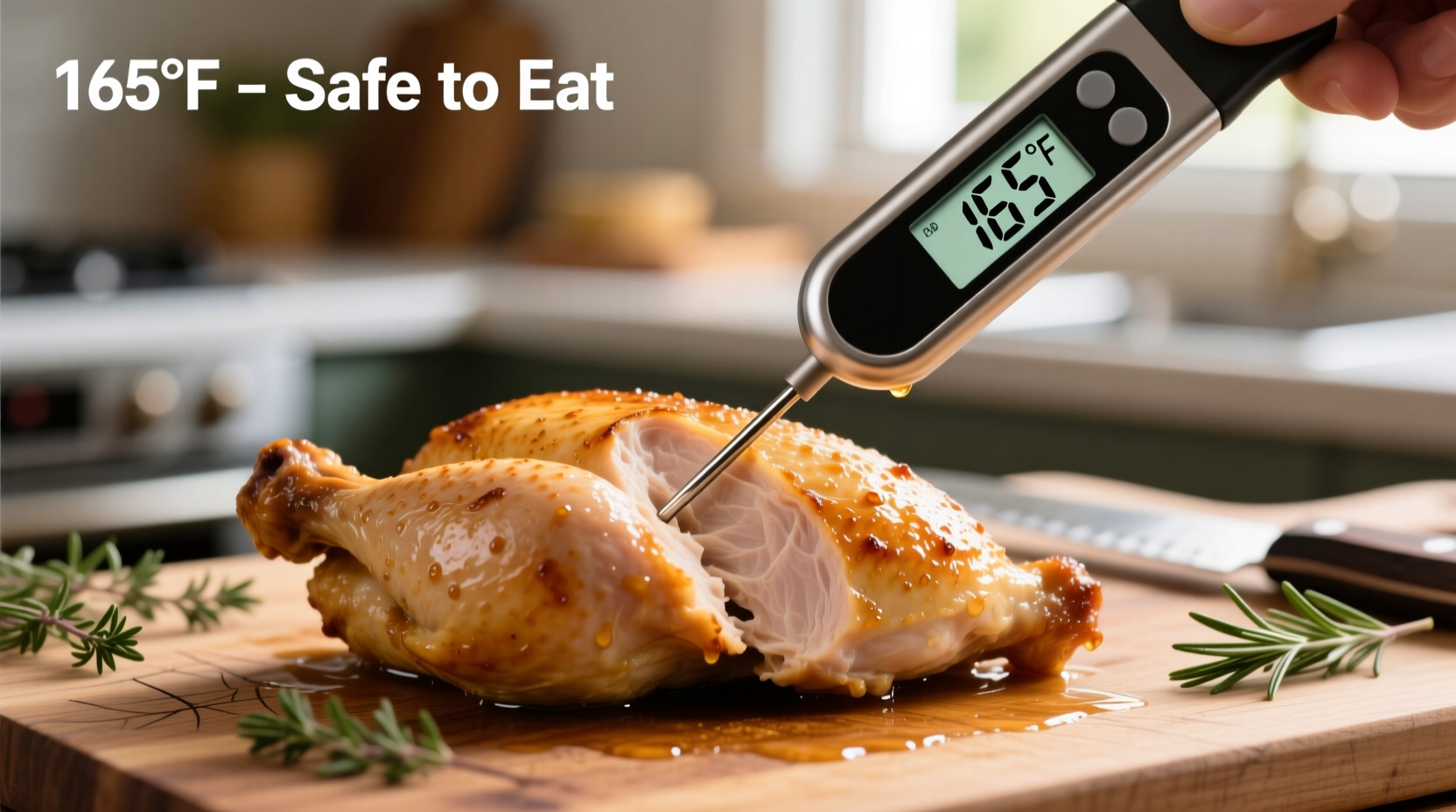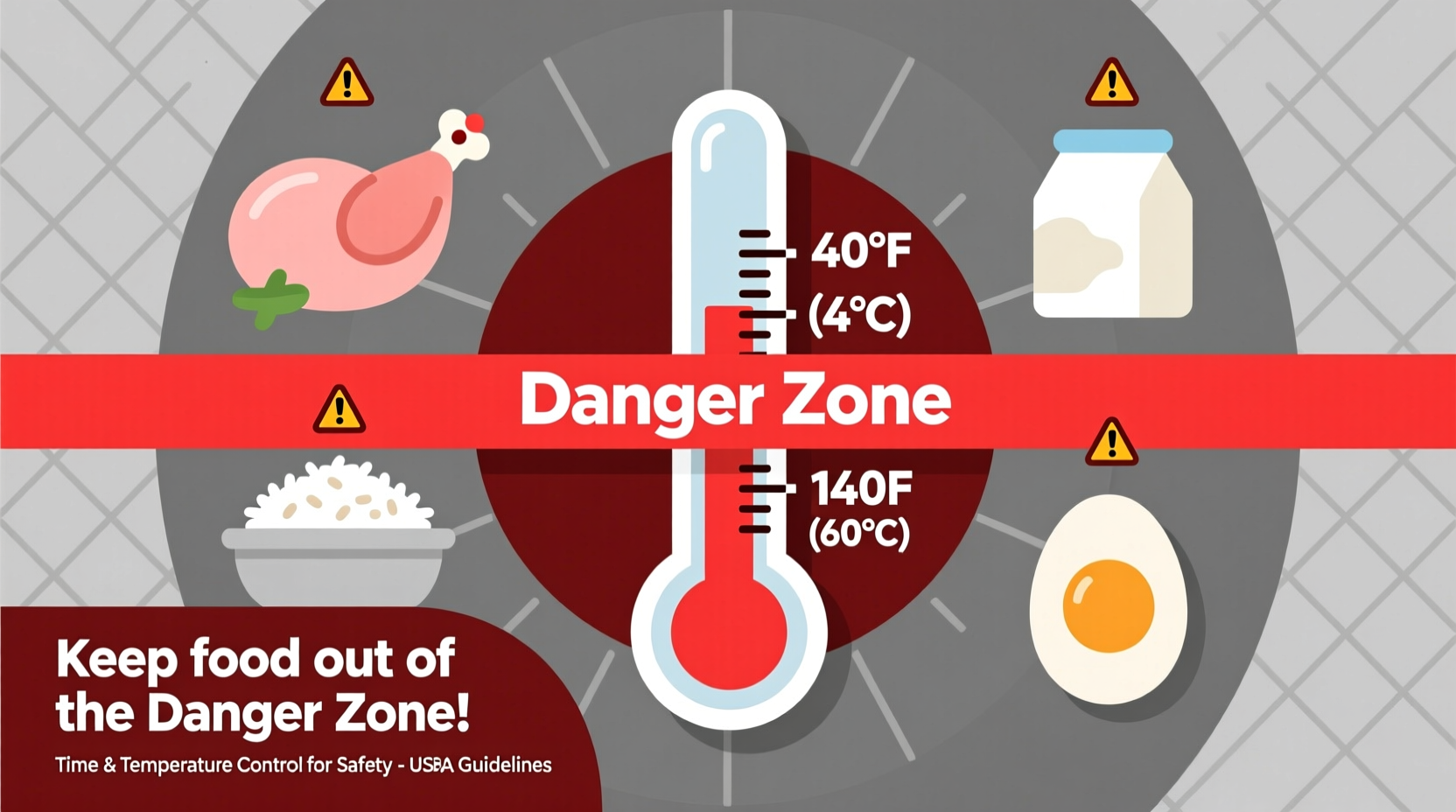The temperature danger zone for food safety is between 40°F and 140°F (4.4°C and 60°C). Within this range, harmful bacteria multiply rapidly, doubling in number every 20 minutes. Keeping food outside this temperature range is critical for preventing foodborne illness.
Understanding the temperature danger zone isn't just kitchen theory—it's your first line of defense against food poisoning. Every year, one in six Americans gets sick from contaminated food, resulting in 128,000 hospitalizations. The right temperature control could prevent most of these cases. Let's explore exactly what the danger zone means for your daily food handling practices.
What Science Tells Us About Bacterial Growth in the Danger Zone
When food sits between 40°F and 140°F, conditions become perfect for pathogenic bacteria like Salmonella, E. coli, and Listeria to thrive. These microorganisms don't just survive—they reproduce explosively. At optimal temperatures around 98.6°F (body temperature), bacteria can double their population in as little as 20 minutes.
Consider this alarming progression: Starting with just 10 bacteria cells, within four hours you could have over 40,000 dangerous pathogens on that leftover pizza sitting on your counter. That's why the "two-hour rule" exists—food shouldn't remain in the danger zone for more than two hours (or one hour when ambient temperatures exceed 90°F).
Comparing Food Safety Guidelines Across Regulatory Bodies
While the core concept remains consistent, different agencies specify slightly different temperature parameters. Understanding these nuances helps you apply the strictest standard for maximum safety:
| Organization | Temperature Danger Zone | Maximum Time in Zone | Source Reference |
|---|---|---|---|
| USDA Food Safety and Inspection Service | 40°F - 140°F (4.4°C - 60°C) | 2 hours (1 hour above 90°F) | FSIS Guidelines |
| FDA Food Code | 41°F - 135°F (5°C - 57°C) | 4 hours cumulative | FDA Food Code 2022 |
| CDC Food Safety Recommendations | 40°F - 140°F (4.4°C - 60°C) | 2 hours maximum | CDC Keep Food Safe |
| WHO Global Food Safety Standards | 5°C - 60°C (41°F - 140°F) | 4 hours cumulative | WHO Fact Sheet |

Contextual Boundaries: When the Danger Zone Rules Change
The standard danger zone applies to most perishable foods, but specific circumstances create important exceptions:
- High-acid foods (like tomatoes and citrus): The danger zone starts at 50°F (10°C) because acid slows bacterial growth
- High-sugar or high-salt foods (jams, cured meats): Osmotic pressure inhibits bacteria, raising the lower threshold to 50°F
- Vacuum-sealed foods: Anaerobic conditions allow Clostridium botulinum to grow at lower temperatures (as low as 38°F)
- Commercial processing: FDA allows controlled time-temperature combinations for specific manufacturing processes
Practical Temperature Control Strategies for Home Kitchens
Knowing the danger zone is useless without proper implementation. These evidence-based techniques keep your food safe:
Refrigeration That Actually Works
Your refrigerator must maintain 40°F or below—but most home units run warmer. Place an independent thermometer in your fridge and adjust settings accordingly. Never overcrowd your refrigerator, as this restricts cold air circulation. Store raw meats on the bottom shelf to prevent cross-contamination from drips.
Cooking Temperatures That Eliminate Pathogens
Reaching proper internal temperatures destroys existing bacteria. Use these verified targets from USDA research:
- Poultry (all types): 165°F (73.9°C)
- Ground meats: 160°F (71.1°C)
- Fish: 145°F (62.8°C) or until flesh flakes
- Steaks and roasts: 145°F (62.8°C) with 3-minute rest
- Leftovers and casseroles: 165°F (73.9°C)
Safe Thawing Methods You Can Trust
Thawing improperly puts food directly into the danger zone. The USDA confirms three safe methods:
- Refrigerator thawing: Takes longest but keeps food at safe temperatures (allow 24 hours per 5 pounds)
- Cold water thawing: Submerge in leak-proof bag, changing water every 30 minutes (30 minutes per pound)
- Microwave thawing: Only when cooking immediately after (use defrost setting)
Recognizing When Food Has Crossed the Safety Threshold
Bacteria that cause foodborne illness don't always produce obvious signs. Don't rely on smell, appearance, or taste to determine safety. When in doubt, throw it out. The USDA confirms that harmful bacteria like Staphylococcus aureus can produce heat-stable toxins that aren't destroyed by cooking.
Follow these clear discard guidelines:
- Perishable food left at room temperature longer than two hours (one hour above 90°F)
- Food with uncertain temperature history (like potluck dishes)
- Leftovers stored beyond 3-4 days in refrigerator
- Any food showing mold (except hard cheeses and firm vegetables)
Temperature Danger Zone Myths That Endanger Health
Despite widespread information, dangerous misconceptions persist:
- "Hot food should cool before refrigerating" - False: This keeps food in the danger zone longer. Divide large quantities into shallow containers for rapid cooling.
- "The sniff test determines safety" - False: Pathogenic bacteria often don't produce odors. Clostridium perfringens grows without changing food's appearance.
- "Reheating makes unsafe food safe" - Partially false: While proper reheating kills bacteria, it doesn't destroy heat-stable toxins already produced.
Essential Tools for Temperature Control
Accurate measurement beats guesswork every time. Invest in these verified tools:
- Digital instant-read thermometer: Calibrate monthly using ice water (32°F) or boiling water (212°F at sea level)
- Refrigerator/freezer thermometer: Monitor actual temperatures, not just dial settings
- Timer system: Track time food spends in danger zone during preparation
- Insulated carriers: Maintain hot or cold temperatures during transport
Special Situations Requiring Extra Caution
Certain scenarios dramatically increase risk. The CDC reports that buffet-style service accounts for 22% of foodborne illness outbreaks in homes:
- Outdoor events: When temperatures exceed 90°F, reduce the two-hour rule to one hour
- Power outages: Keep refrigerator closed; food stays cold for about 4 hours
- Vacation prep: Before leaving home, empty perishables or set refrigerator to coldest setting with frozen water bottles
- Meal prep: Cool cooked foods rapidly before refrigerating using ice baths
When Food Safety Fails: Recognizing and Responding to Foodborne Illness
Despite precautions, sometimes contamination occurs. Know these critical signs:
- Onset time: Most bacterial illnesses appear 4-24 hours after consumption
- Critical symptoms: High fever (over 101.5°F), bloody diarrhea, prolonged vomiting, signs of dehydration
- High-risk groups: Children under 5, adults over 65, pregnant women, and immunocompromised individuals need immediate medical attention
Never attempt to self-treat severe foodborne illness. The FDA reports that 3,000 Americans die annually from food-related illnesses, many due to delayed medical care.











 浙公网安备
33010002000092号
浙公网安备
33010002000092号 浙B2-20120091-4
浙B2-20120091-4